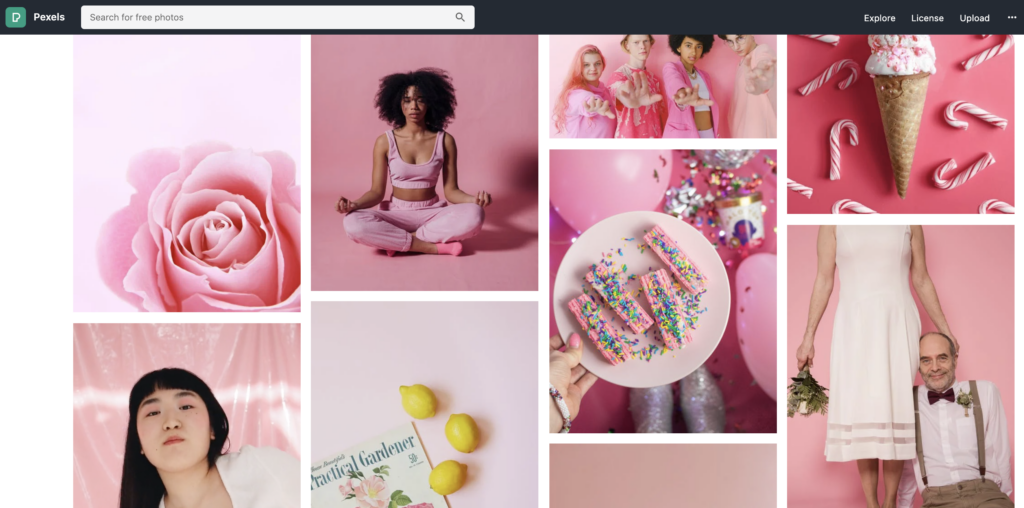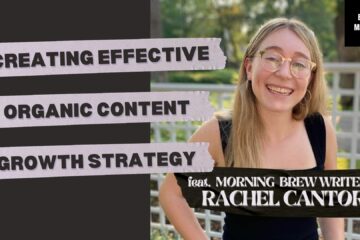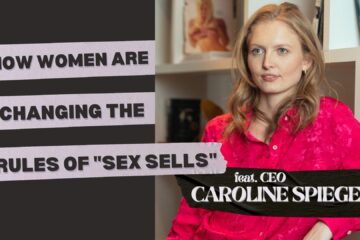
Pexels Marketing Leader on Mission-Driven Brand for Millennial, Gen-Z Appeal

I’ve used stock photo and video resource Pexels for a really long time. (I even included them on my list of my favorite free stock photo and illustration sites.) So when I recently connected with their head of marketing, Enrique Hoyos, on Twitter, I jumped at the opportunity to interview him about the Pexels marketing strategy.
(The full interview will appear in the PromoPrep marketing leadership newsletter.)
Here are clips from the interview transcript. 👇
My name is Enrique Hoyos. I am a growth and marketing, I would say expert or person. It’s what I love doing. And currently I am the head of marketing for Pexels.
And for the people who don’t know what Pexels is, it’s one of the biggest free photo and video stock libraries.
It’s used by millions of people all over the world to bring their stories to life and bring products to life through that.
How did you end up running the Pexels marketing strategy?
I have a huge passion for photography.
I’ve always been a person who just loves taking photos and videos. I even know how to do a little bit of graphic design.
So it kind of just fit my personality.
But one of the things that I didn’t want to do is join another startup that was just going to be a burnout.
I wanted something that had a bit more meaning. And to me it was the photography piece that I loved and combined it with that.
But the part that sold me is the mission behind it.
I mean, for the majority of people you see Pexels, you see any stock platform. But for them (or for us now) what we’re trying to do is create positive impact through imagery.
And to do that, you kind of have to think, how much does imagery actually affect the world? It has a huge amount of power. It normalizes things. It changes culture.

If you see imagery all over the place, but it’s only white, old men [appearing] when you type business, or when you type ‘couple’ it’s only heterosexual couples. We’re [trying] to show more of the other images and have people just normalize that and be like, “Oh, I wasn’t thinking of adding a same-sex couple to my blog or to my app, but it’s there. I didn’t have to search specifically for it.”
You just start normalizing diversity and empowering people to do that.
And when they said that I was like, this is it.
What does ‘normalizing diversity’ mean for you?
Sadly algorithms are based on historical data, right?
If you asked an algorithm right now to do something, it is likely that it’s going to be a little bit stereotypical. It’s going to be a little bit prejudiced.
There’s so much historical data that–
If everyone’s clicking on the image when you search for business, and you’re just clicking on the board room of white people, that’s telling the algorithm, that’s it.
And if people keep clicking on it, the more it gets up there. And the more it’s up there, the more people will click it.
It’s just a vicious cycle.
Pexels distinguished its brand with fresh content that felt very different from traditional stock photography. It also aligned well with Millennial and Gen-Z culture.
What went into creating that brand image?

It was 100% intentional.
We want to be different. We don’t even want to think of ourselves as stock photography. We’re a library of photos and videos that people can use. And feel going back to that, like relate and it’s like being related to people.
So whenever you see the images, you can feel like there’s a little bit of you in them.
And there are two pieces for that work we’ve done that we’ve really focused on.
One of those is the work with our community of contributors and how we not only find the right ones to help us acquire that kind of photography, but how do we incentivize them to do that?
And I think that a lot of them see the mission that we have, and they want to be part of that.
We are also launching in multiple markets to be able to get more photography from that culture and from that kind of people. To bring it into the platform, be able to show that to other people around the world.
And again, going back to that diversity, it’s partially finding the good photographers, too, that can execute on it.
And then the secondary side of things is the work that we’ve done on the algorithm side of things.
How does the algorithm fit into Pexels marketing, branding and mission?
So what we’ve done, and are continuously doing, is actually introducing a human touch to the algorithm. So for all the search terms, we not only let the algorithm pick stuff, but our curation team actually goes and handpicks a certain number of photos.
That gets boosted into the algorithm to show that diversity, to add that opportunity for those photos to be seen and be clicked on.
And I don’t have the data. But we did that last June. There was a whole focus on PRIDE and we did it for ‘couple.’ We did it for ‘marriage,’ for all these [search terms] to be able to show not just heterosexual couples, but like all kinds of couples in there.
You could immediately see a huge amount of downloads on those photos that were not getting downloaded before. Because people have to search, ‘I want to homosexual couple’ to display that. And now people have the option to just be like, ‘I want a couple.’ And then I see beautiful photos of people just loving each other.
And then you can just pick whichever one speaks to your brand or speaks to yourself.
But you don’t have to think of like, ‘Oh, I have to go deeper and refine my search for homosexual couple’ because the majority of people won’t do it.
And not because they’re bad people. It’s just not in their mind to think about it.
We’re all busy. We’re trying to be–not lazy but our brain is wired to be as quick as we can and just get things done.
So we’re trying to facilitate that for people to be able to see more of that [diversity].
How has your background analyzing marketing data impacted your approach to brand and creative?
When you start with data, you really get to understand what is happening.
And from there, people stop there. But they never tend to dig deeper into the why.
And I was that person. I literally was conversion rate optimization focused, where I’m just going to change these things and make it work. But I wasn’t really thinking truly, what is the problem we’re solving for that person?
What is his pain point? What are they feeling?
The essence of marketing becomes the communication of that pain point. If you don’t do it well, you can be the best copywriter. If you don’t know your customer, it doesn’t matter how good of a writer you are. You’re never going to hit it on the nail.
Even with things like SEO, where people think like SEO is a thing where you don’t need to think about the human. Because it’s just an algorithm. But that’s a very, again, shortsighted view of that because Google is not optimizing for the algorithm. Google is ultimately optimizing for people seeing value in [content].
So at the end of the day, if your thought process is how do I add the most value to that person through this, that’s going to be able to give you that better piece of marketing.
Who’s a marketing leader who inspired your career path?
Melissa Hughes, she was hired as the director of strategy. And she completely took my curiosity to a whole other place. Because she took me from seeing the data and being like, “Oh, it’s working or not working,” to asking why.
The data tells you what is happening, but if you don’t combine that with the qualitative insight, you don’t know why things are happening. You don’t know the people behind [the devices], what they’re doing. You’re communicating to people.
And I think that [marked] the biggest growth of my career and where my mentality switched.
And I understood the essence of marketing is really understanding the customer, understanding what is it that people need.
Or what’s the problem that we’re solving for them to be able to market them to them properly.
Read another post: Lessons on Marketing and Branding from Rihanna
Interested in getting more content like this? Sign up for my newsletter and get fresh insight delivered to you weekly.


